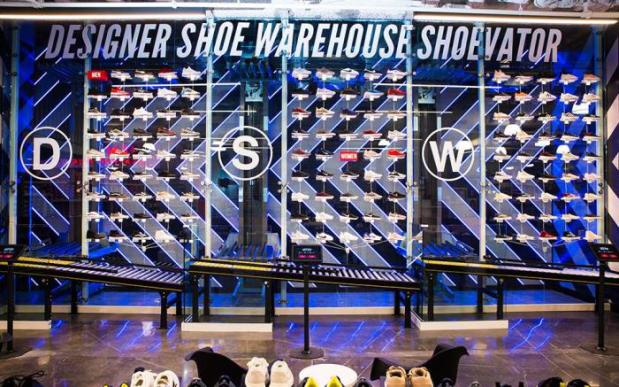DSW’s Experimental Moves

After years of steady, positive growth, DSW started to stumble in 2017 — particularly at the end. While some of it can be written off on account of bad weather — repeated hurricanes to be specific — its problems were wider ranging. DSW was one of many physical brands that seemed to find itself a bit out of sorts in a rapidly digitizing retail environment.
Of course, efforts were made to go digital — DSW bought both ShoeMetro and ApparelSave in 2016 as part of a push to grow its Ebuys platform’s sales. It learned shortly thereafter that selling on the web is not quite as easy as Amazon and Zappos make it look. In November 2017, DSW took a write-down on Ebuys the tune of $52.7 million — taking a loss because of huge markdowns to clear inventory.
The shoe retailer tried to sell Ebuys, but there were no takers, leaving DSW with only shuttering and liquidation as options.
“The challenge of sourcing the right merchandising in a sustainable way, and the requirements to scale the business, entails unacceptable economics in the near term,” Chief Financial Officer Jared Poff told analysts when the firm announced its decision to close Ebuys in March. It was not a choice that left many broken-hearted, though, given the expansion’s non-contribution to DSW’s future fortunes.
Set back, but not daunted, DSW has continued its brand-wide reset, as it has begun to rethink what its retail experience should be.
To that end, the world has met the latest DSW outpost — an experimental store on the Las Vegas strip.
The concept store is both bigger and smaller than a standard DSW store. In terms of absolute square footage it is a small store — about half the size of a DSW retail space. But in terms of what is packed into that space? There is a lot going on.
The new store is not just a place to buy shoes, but also a location where consumers can get a mani/pedi at the nail bar, have their shoes repaired, and even view live performances — all in an effort to drive foot traffic to a store dedicated to showing feet some TLC.
But the most eye-catching, and often discussed, feature of the DSW concept store is the shoe escalator — or, as the brand terms its trademarked concept, the Shoevator.
You may find yourself wondering exactly what that is.
The store features a display wall that has three elevator lifts built in. When a customer picks their shoes from the wall — via a tablet nearby or using the DSW app on their phone — a message is sent to a salesperson on the mezzanine level of the store. That worker picks the shoes, loads them into a numbered bin, and sends them down to the sales floor via the Shoevator to the customer’s waiting arms.
“It’s essentially a giant shoe vending machine inspired by the assembly line-style mechanisms that we use to move product around our actual warehouse,” explained DSW CEO Roger Rawlins. “DSW has been transforming itself by creating engaging experiences that stir emotion and inspiration.”
The store even lets consumers who don’t want to pay for their shoes, play for them, using an arcade-style game called the Heat Vault Keymaster, which challenges players to retrieve a pair of kicks in two moves by inserting a key into a keyhole using a joystick. Having played these types of games in arcades nationwide, the PYMNTS staff is pretty sure people should plan to pay for said kicks.
And, for when customers have shopped till they drop, the store also boasts a passageway covered in video-screens, offering up a sensory experience of light and sound on three sides.
“Our ‘video tunnel’ is an immersive and exciting feature that makes customers feel as if they’re flying over a city, swimming underwater or walking through a desert,” Rawlins explained. “In reality, they’re traveling down an escalator into the new DSW sales floor, where more unique experiences await.”
And while the concept store is a one off for the brand, DSW confirms that its strategic plan is highly focused on bringing new, immersive innovations to its chain nationwide — as well as building a more multichannel experience for guests.
Will it be enough to repel the competitive forces that are battering it? Hard to say — these are turbulent times in retail.
But inventing a Shoevator? We have to believe that is a good start.
